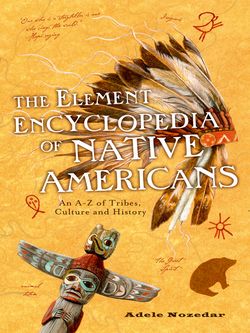Читать книгу The Element Encyclopedia of Native Americans: An A to Z of Tribes, Culture, and History - Adele Nozedar - Страница 98
CATLIN, GEORGE
Оглавление“I have, for many years past, contemplated the noble races of red men who are now spread over these trackless forests and boundless prairies, melting away at the approach of civilization.”
1796–1872
Arguably the most famous painter of the Native American, Catlin’s writings as well as his paintings provide a rich heritage of information about the indigenous peoples of America, invaluable in that Catlin lived closely among them, studying their customs and habits, languages, and ways of living.
Born in Pennsylvania, although he was trained as a lawyer Catlin opted out of the legal profession quite early on in favor of art, and set up a portrait studio in New York. In common with others, Catlin rightly suspected that the Native American and his way of life were endangered, and so he decided to dedicate his life to the study of the people.
He published two significant volumes of Manners, Customs and Conditions of the North American Indians, replete with 300 engravings, in 1841. In 1844 another book followed: The North American Portfolio contained 25 color plates, reproductions of his paintings. These books are still in print today.
Catlin’s mother inspired his continuing fascination with the Native people of his country. When he was a child she regaled him with stories of how she’d been captured by a band of Indians as a little girl, which no doubt stimulated his childish imagination. Catlin’s appetite for recording the lives of the Native Americans, a passion which led to his giving up a “proper” career, was further excited when he witnessed a delegation of Native Americans passing through Philadelphia.
In 1830 he joined General William Clark on his expedition up the Missouri. Basing himself in St. Louis, Catlin managed to visit at least 50 different tribes, and later traveled to the North Dakota—Montana border, where the tribes—including the Mandan, Pawnee, Cheyenne, and Blackfeet—remained relatively untouched by the encroaching Europeans. When he returned home in 1838, he assembled his works—which included some 500 paintings of Native Americans and their way of life—into his “Indian Gallery.” He also included artifacts in the exhibition.
Catlin lectured extensively about his experience, and in 1839 took the Indian Gallery exhibition on tour of the major European capitals—Paris, London, and Brussels. However, none of this generated an income and Catlin was forced to seek a buyer for his work. He was desperate to keep his life’s work intact, and spent some time trying to convince the U.S. Government to purchase the entire collection, but in vain. Eventually, he sold the entire collection of 607 paintings to a wealthy industrialist, Joseph Harrison, who put it into safe storage. In 1879, after he died, Joseph Harrison’s widow donated the Indian Collection, a deal of which had suffered the ravages of time and were mouse-eaten and damp, to the Smithsonian Institution, where Catlin had worked for a year just before his death. It remains a part of the Institution’s collection.
